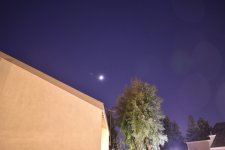Petapixel is a decent web site that gives valid information. Here is an article telling how to get Milky Way images using a crop sensor body with a kit lens.
https://petapixel.com/2019/05/01/how-to-shoot-milky-way-photos-with-a-crop-sensor-dslr-and-kit-lens/
You do need to be aware of the length of time for each image. Too long will create star trails. There are lenses for DX bodies that offer a 10mm to 12mm focal length (equivalent field of view to 14mm to 18mm on an FX body). But whether or not they would be good for Milky Way photos, I don't know. Anyway, seems like you are jumping into the Photo Pills app. Good luck with it! :encouragement:
https://petapixel.com/2019/05/01/how-to-shoot-milky-way-photos-with-a-crop-sensor-dslr-and-kit-lens/
You do need to be aware of the length of time for each image. Too long will create star trails. There are lenses for DX bodies that offer a 10mm to 12mm focal length (equivalent field of view to 14mm to 18mm on an FX body). But whether or not they would be good for Milky Way photos, I don't know. Anyway, seems like you are jumping into the Photo Pills app. Good luck with it! :encouragement:



